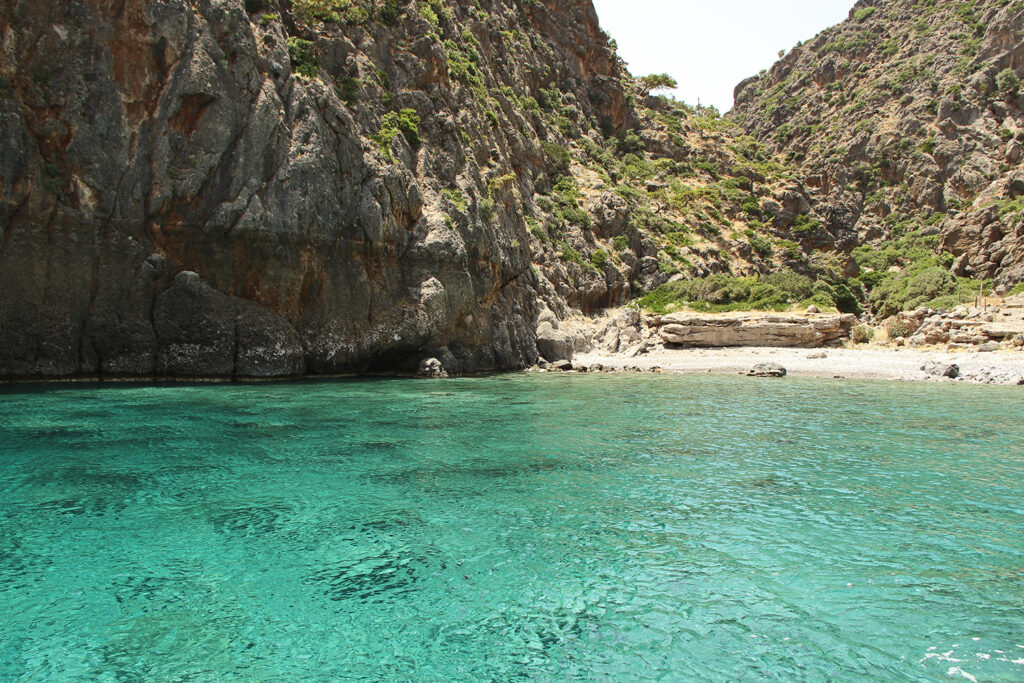
Sougia
Sougia Sougia is a small seaside village in south-western Crete, 60 km from the city of Chania. It is a quiet and relatively secluded destination, surrounded by majestic mountains and gorges. The beautiful gorge of Agia Irini ends about 5 km south of Sougia. The beach in Sougia has pebbles and relatively deep waters, while it extends for about 1.5 km. At its western end there is a small port as well as the entrance of the gorge of Lissos. At its eastern end, separated by large rocks, there is a small cove frequented by nudists. In Sougia you will find mini-markets, bakery, cafes, taverns, restaurants, small bars and a club. There is no gas station, doctor's office, pharmacy or any bank (there is an ATM). From Paleohora, you can go to Sougia either by road (33km, about 45 minutes), by the ferry boat boat or on foot via the E4 trail (14km, 5-6 hours).
EXCURSIONS

Ancient Lissos
Lissos (or Lissus) was an ancient city, port of Elyrus, and dates back to the 4th century BC up until the 9th century AD. It was famous for its thermal waters and the healing temple, Asclepeion, where many people gathered, even outside Crete, for healing. It is now an archeological-historical site, scattered with ancient ruins and monuments. Many ancient items are preserved there such as column capitals, ancient building foundations, pieces of marble, the mosaic floor of the temple of Asclepius with images of animals, a Roman cemetery with vaulted tombs, remains of a Roman theater, and Byzantine monuments such as the Temple of St. George. One can go to ancient Lissos via the E4 trail, either from Sougia (2.5 km, about 1 hour) or from Paleohora (11.5 km, about 5 hours). Alternatively, there are frequent trips with sea taxis from Sougia or Paleohora.
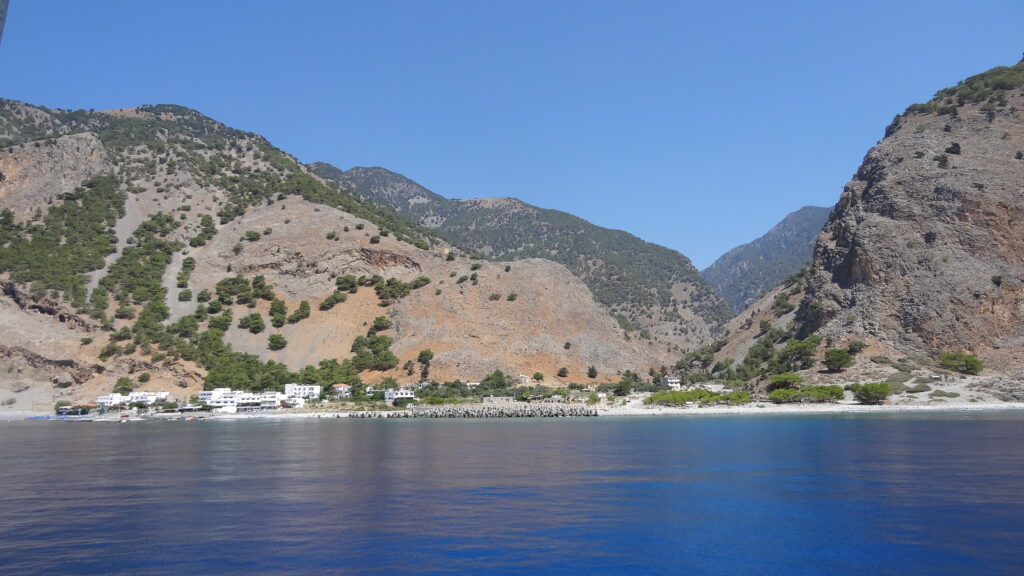
Agia Roumeli
Agia Roumeli is a small, seaside village, 56km south of the city of Chania. Its small settlement is located on a large bay at the exit of the Samaria gorge, between the sea and the wild landscape of the White Mountains (Lefka Ori). In addition to the central, organized beach, there are several other beaches to the west and east of Agia Roumeli, many of them with caves. Agia Roumeli has basic infrastructure such as taverns, cafes and mini-markets. At noon, as the walkers of Samaria arrive, the village is flooded with visitors, whereas, after the departure of the ferry boat, it returns to its calm rhythms. There is no road to get to Agia Roumeli. The ferry line connects Agia Roumeli with Paleohora.
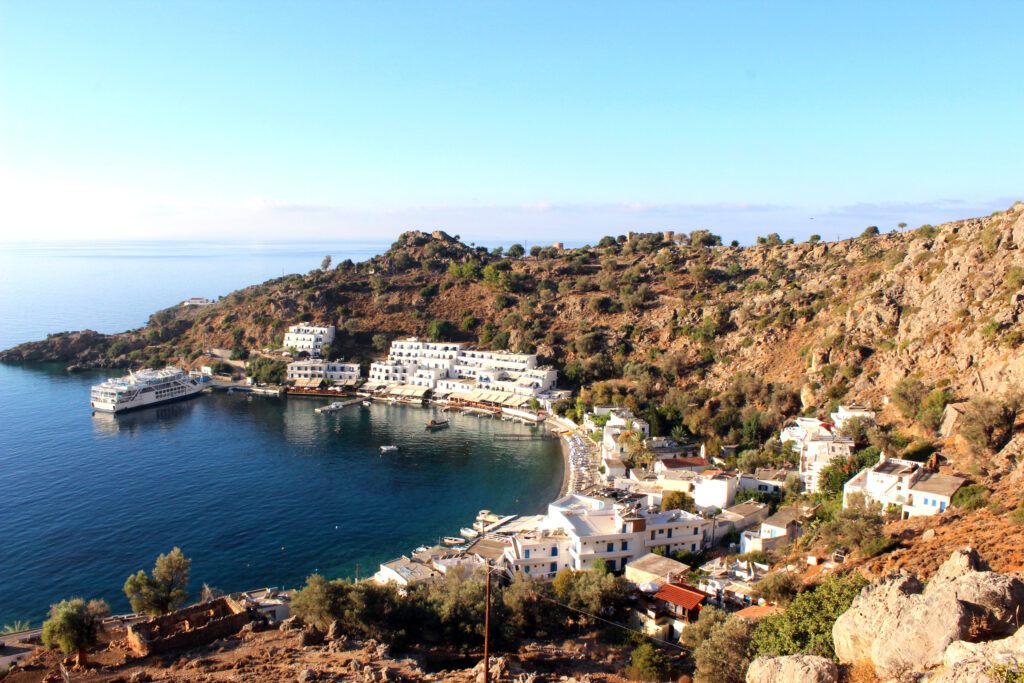
Loutro
Loutro is a small scenic village, 71km south of the city of Chania. Its enclosed bay with the Fanari islet renders it a safe natural harbour. Just outside the village there is still preserved part of the ancient city of Phoenix (Finikas) and the temple of Apollo. Around Loutro there are many beautiful beaches, such as Glyka Nera and Marmara, accessible by foot, by canoe or by sea taxi. The ferry line connects Loutro with Paleohora.
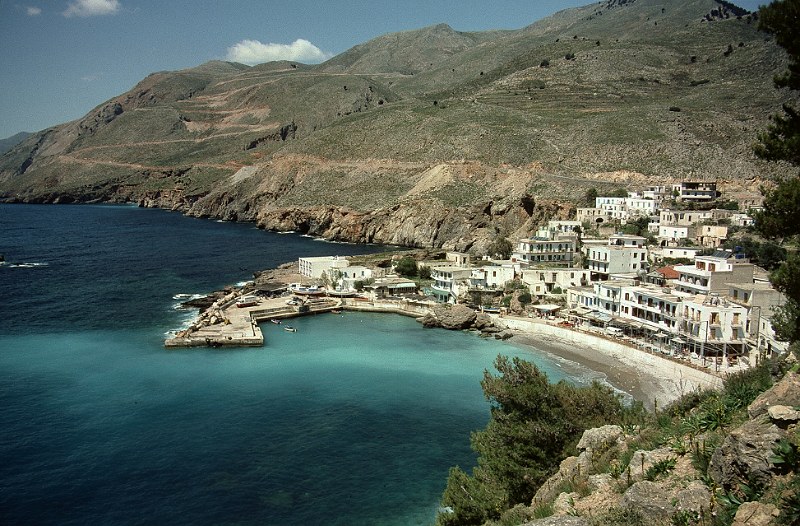
Hora Sfakion
Hora Sfakion (or Sfakia) is a village in southern Crete, 72 km from the city of Chania. In the village you will find taverns, mini-markets, butcher’s shops, pastry shops and bakeries but also basic infrastructure such as gas station, post office, pharmacy, police station, health centre and ATM machine. At the western exit of Hora Sfakion there is Vrisi beach, and after a kilometre there is Iligas beach where you can discover huge caves. Around Hora Sfakion, at the foothills of the White Mountains, there are many traditional villages such as Agios Ioannis, Anopoli, Imbros and Askifou, as well as many areas for hiking and mountaineering. In Hora Sfakion there is a bus station and a port to which the ferry, also connecting Sfakia with Paleohora, moors.
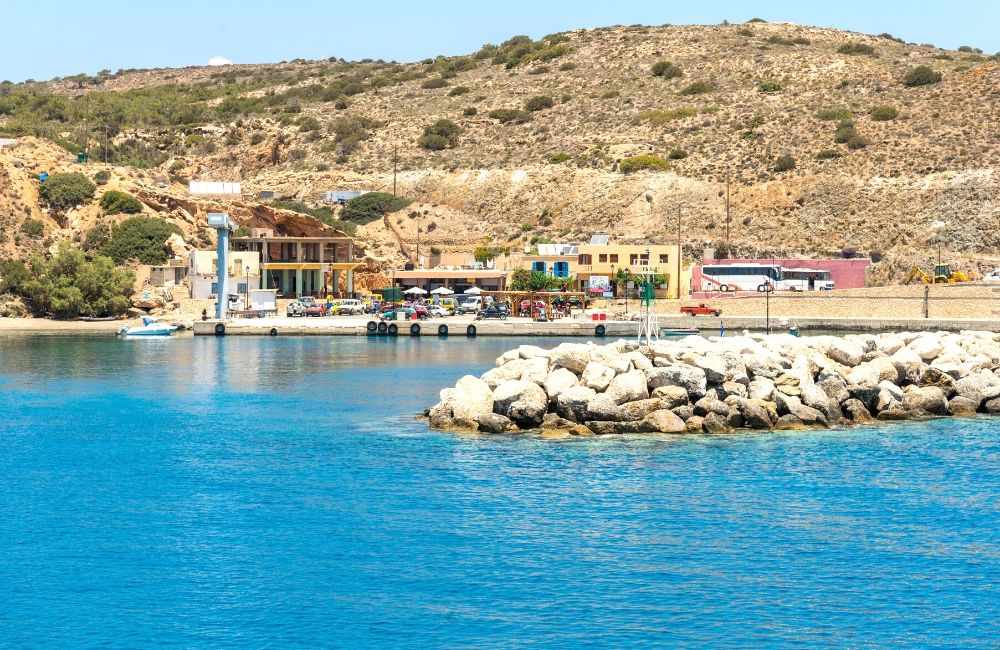
Gavdos
Gavdos is a small island at the southernmost tip of Europe, 32 nautical miles from Paleohora. It is famous for its crystal clear beaches, its peaceful and free feeling in the atmosphere and its wild natural beauty (the island has been included in the Natura 2000 protection program). It consists of small scattered villages and settlements which are connected by unique trekking paths. The permanent residents are about 150, while in summers the island welcomes thousands of visitors, mainly campers as there are few rooms for rent. In certain villages there are taverns, cafes, bars, a bakery and mini-markets. A small bus travels inside the island to specific destinations such as Kastri (the capital), Karave (port), the lighthouse and villages near magnificent beaches such as Tripiti and Potamos. From Paleohora, you can go to Gavdos by ferry (around 4 hours long).
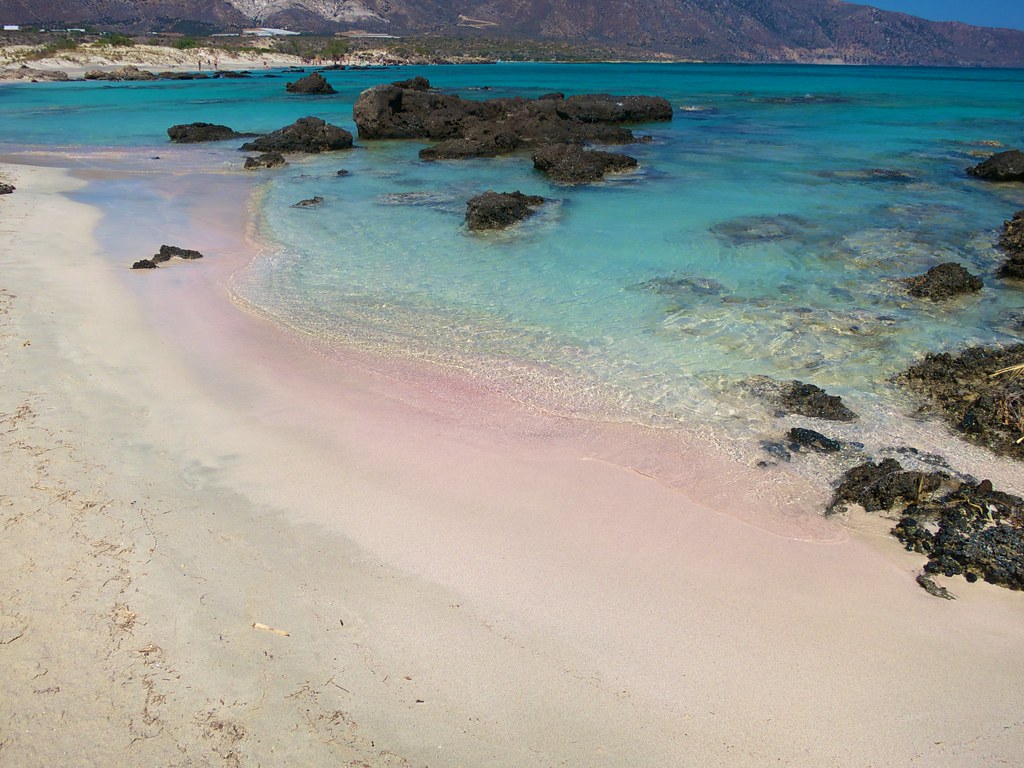
Elafonisi
Elafonisi is 76 km southwest of the city of Chania. It is a peninsula that 'cuts' at one point, forming a beach, a lagoon and an islet. It is one of the most popular beaches in Crete, famous for its exotic beauty, turquoise waters and white-pink sand full of tiny shells. The waters are very shallow, especially in the lagoon which you can cross on foot and reach the islet. In the islet there are dunes with endemic and rare plants such as white sand-lilies and sea cedars. Most people gather on the organized beach on the east side, in front of the lagoon. Quieter and secluded beaches exist on both sides of the island and along the peninsula. From Paleohora you can go to Elafonisi either by road, or by sea taxi, or via the E4 trail (20 km, about 5 hours).
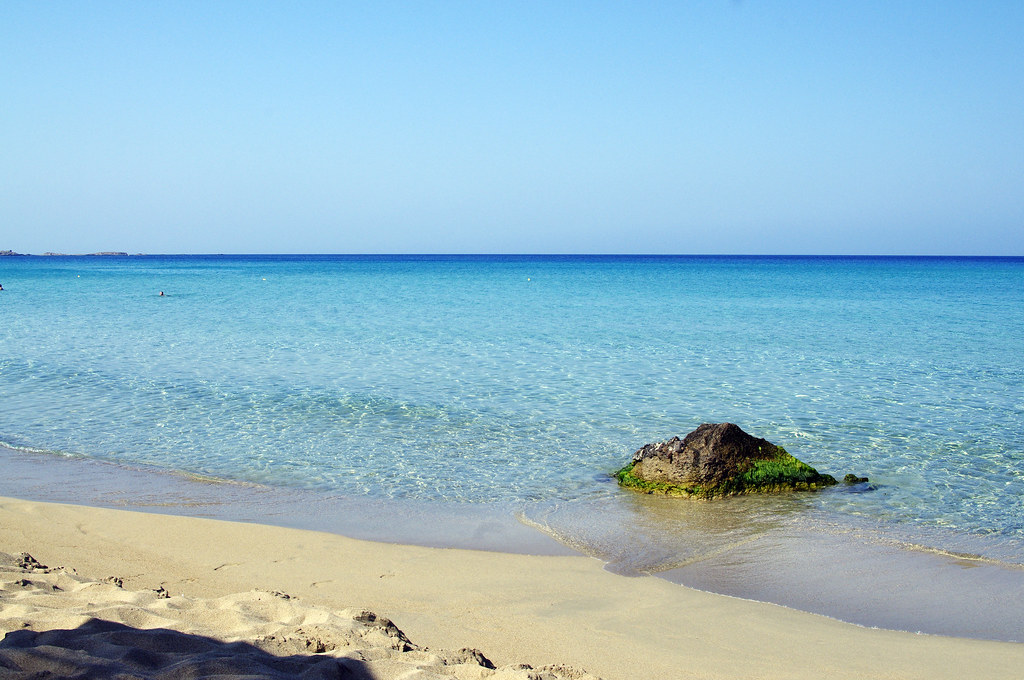
Falasarna
Falasarna is one of the most famous beaches in Greece and is located 52 km west of the city of Chania. Its coastline of about 2 km consists of individual beaches with light-coloured sand and turquoise waters. Falasarna is famous for its exquisite sunset but also for its frequent waves as the location is exposed to the wind. North of the beach one can visit the archaeological site of ancient Falasarna. Parts of the ancient city wall, ancient houses and tombs are preserved there, as well as a stone throne which is said to have been dedicated to the God of the Sea, Poseidon.
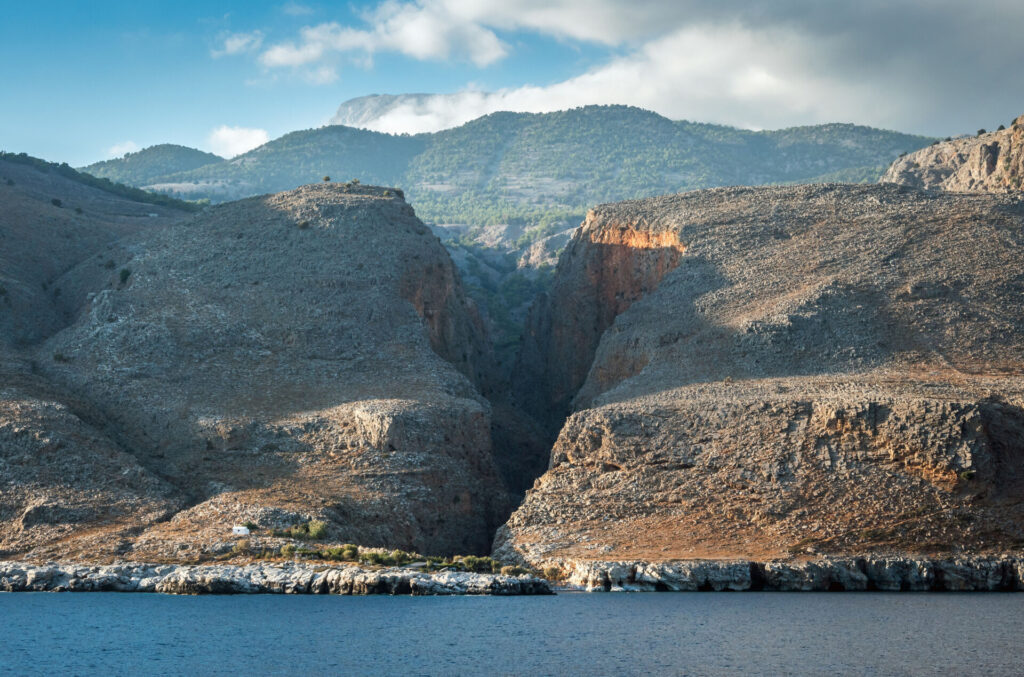
Aradena Gorge
The gorge of Aradena is a gorge of wild beauty, the deepest gorge of the prefecture of Chania. Its northern entrance is located in the village of Aradena which is 87 km from the city of Chania. In this village there is the second highest bridge in Greece (138 m), a popular spot for bungee jumping. The crossing distance of the gorge from this point is 7 km and the duration is about 3 hours. The gorge of Aradena is characterized by the imposing height of its walls and the huge rocks that stand throughout it. The gorge ends at Marmara beach which has clear blue waters and many caves. From there you can go to Loutro or Sfakia by sea taxi or by following the E4 trail.
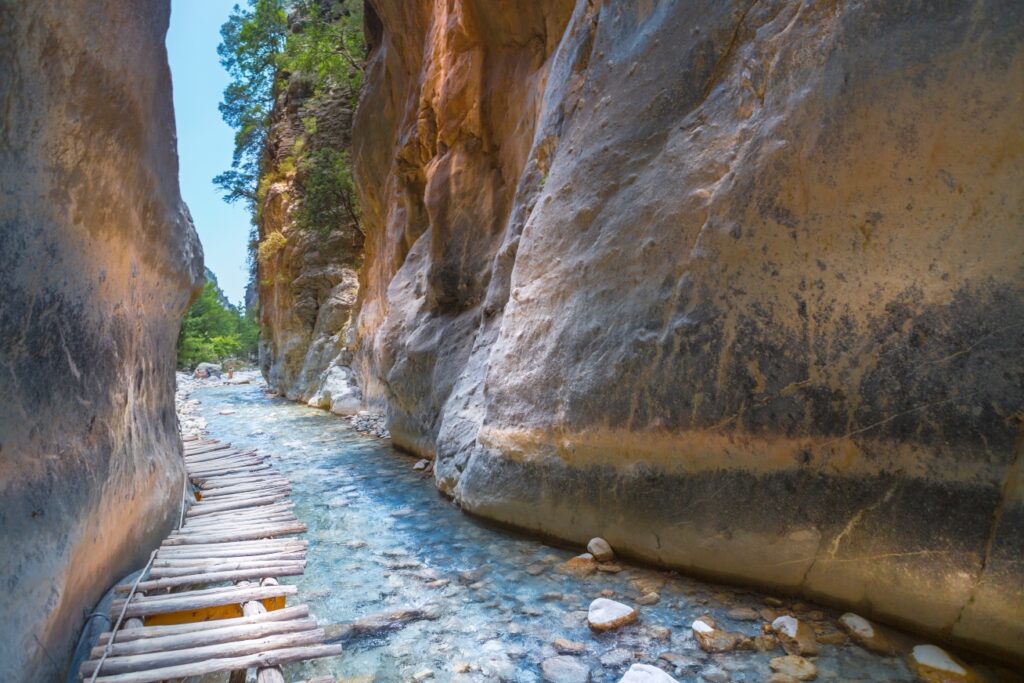
Samaria Gorge
Samaria Gorge is one of the most popular gorges in Europe and the second largest in length. Its passage usually starts from the northern entrance which is located 40 km south of the city of Chania, at Xyloskalo in Omalos plateau, and at an altitude of 1227 meters. The main path of the gorge is about 14 km long and after another 3 km it ends at Agia Roumeli (total duration 6 to 8 hours). The largest width of the gorge reaches 150 meters, and the smallest, at Portes point, is 3 meters. The gorge is internationally recognized as a naturally and culturally valuable landscape. The cliffs are inhabited by endemic animal species such as the Cretan chamois (kri-kri), wild birds such as the golden eagle and vultures, as well as over 450 species of flora, among them many rare flowers and herbs. A stream flows along the verdant gorge and there are many springs with drinking water. You will also find Byzantine chapels, ancient sanctuaries, castles above the gorge and at the exit, and, approximately in the middle of the gorge, the deserted village of Samaria. From Paleohora there are bus routes to the northern entrance of the gorge. One can also travel by ferry boat from Paleohora to the southern entrance at Agia Roumeli.
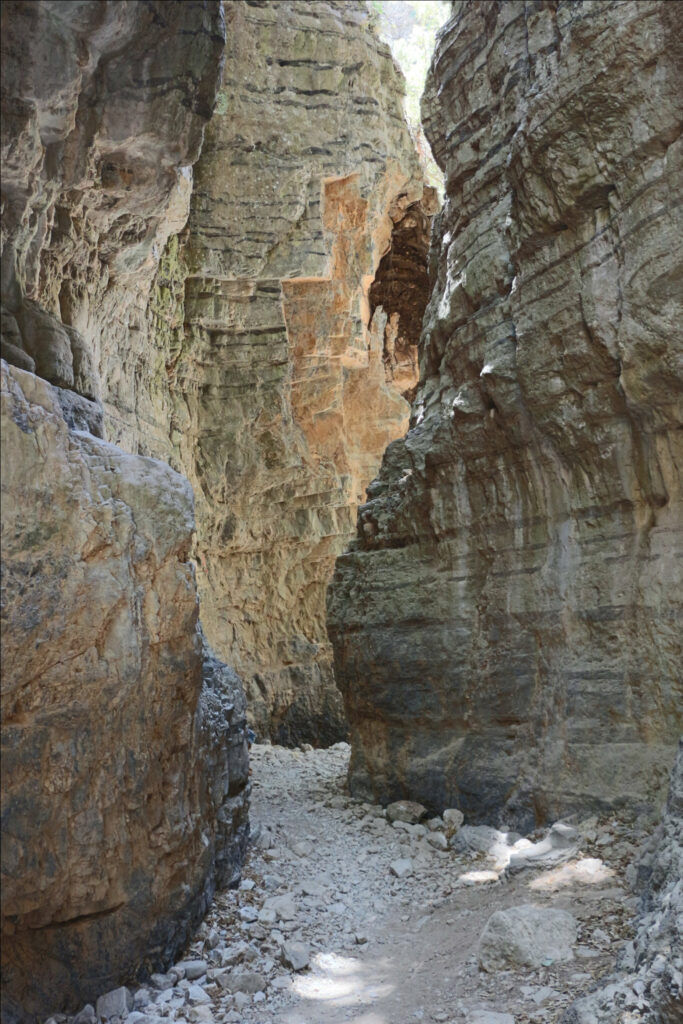
Agia Irini Gorge
The gorge of Agia Irini (Saint Irene) is located on the west side of the White Mountains. It starts from the village of Agia Irini, which is 43 km from the city of Chania, and ends about 5 km from Sougia. It has a length of 7.5 km and a duration of about 3 hours. It is considered one of the most beautiful gorges of Crete and is the second most visited after the gorge of Samaria. Most of its landscape is characterized by dense vegetation as the Agia Irini river passes through the gorge.

